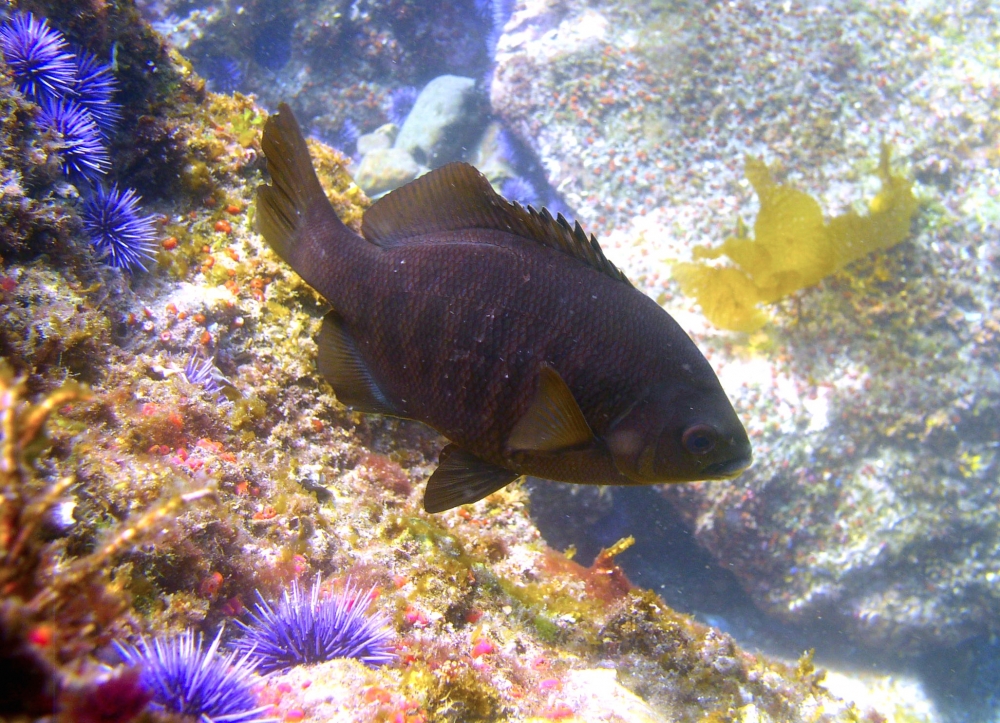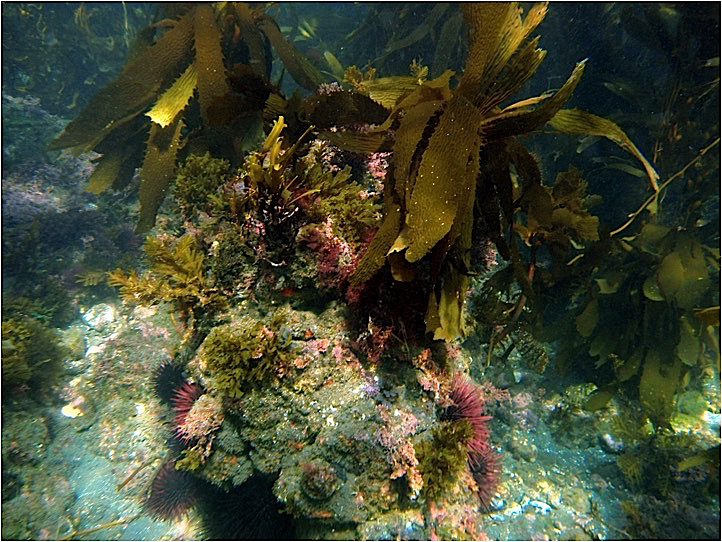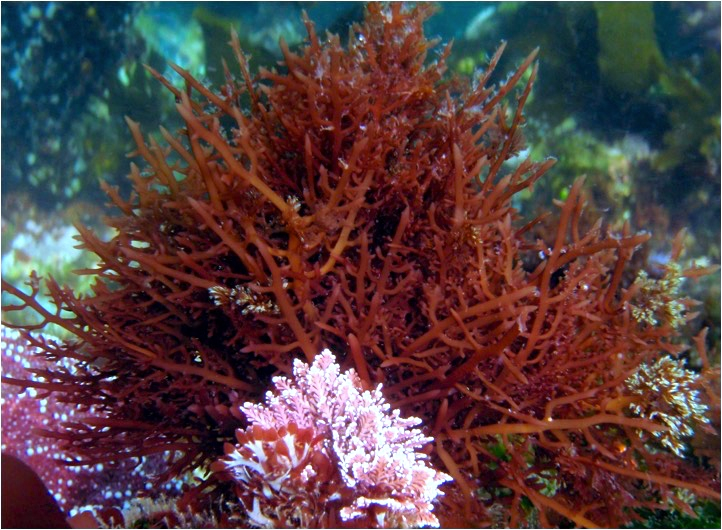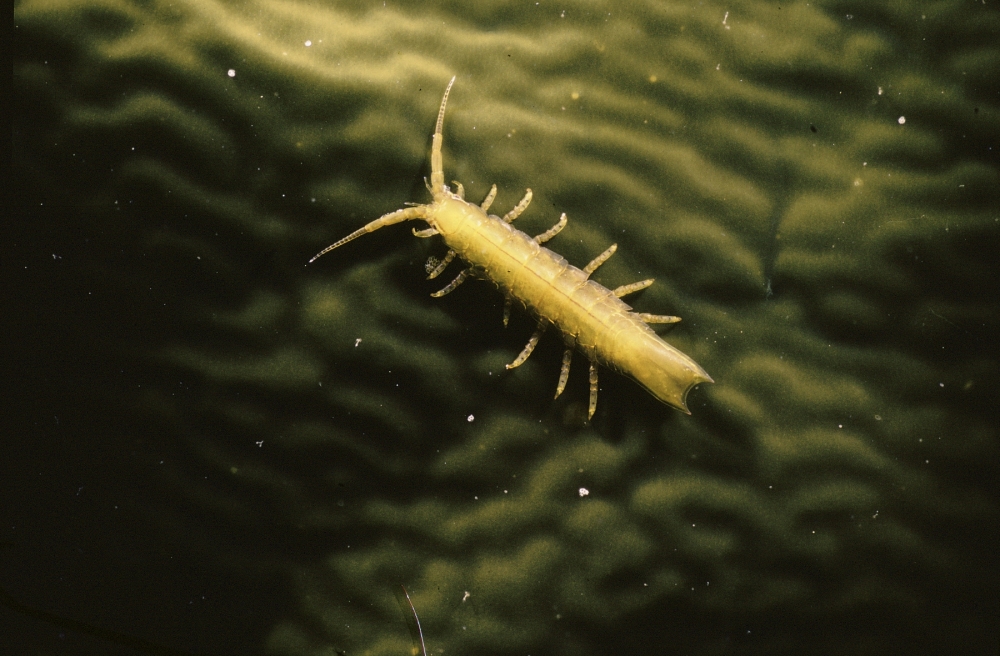A Fine Kettle of Fish


For years, scientific literature — as well as fisheries management and conservation efforts — has assumed that the survival of adult fish is relatively constant through time and that most fluctuations in the number of adults come from variation in the number of young that are produced and survive to maturity.
However, new research reveals — at least for a Pacific marine reef species — that fluctuating food supplies and competition can alter survival of adult fish and be a major cause of fish populations fluctuating in abundance through time.
Daniel Okamoto earned his doctorate at UC Santa Barbara in part by analyzing records collected over more than a quarter century by Russell Schmitt and Sally Holbrook, professors in the Department of Ecology, Evolution, and Marine Biology and the campus’s Marine Science Institute. The analyses showed that, for black surfperch (Embiotoca jacksoni), survival of adults from year to year was strongly linked to both the amount of prey available and the number of fish sharing that food. The findings appear in the journal Ecology Letters.
“We found that the survival rate varies through time and is driven by local-scale processes of food variability and competition for that food supply,” said lead author Okamoto, now a postdoctoral scholar at Simon Fraser University in British Columbia. “That can have major implications for how we think about the impact of fishing.
“Our results demonstrate that mortality from fishing or other human activities can greatly amplify fluctuations in the number of fish in a population over time,” Okamoto added. “This runs counter to all management and conservations goals for harvested species.”
The time series used in the synthesis came from the Santa Barbara Coastal Long Term Ecological Research (LTER) project. Schmitt and Holbrook began surveying the food supply of surfperch on Santa Cruz Island in the early 1980s. Year after year, they returned to the same locations and meticulously surveyed the prey, their habitat and the different age classes of fish.
“The nature of the time series data that we collected was shaped by the conceptual ideas we ultimately wanted to test, which in general sets LTER time series data apart from those typically collected by monitoring programs,” Schmitt explained. “In our case, we wanted to know how much the dynamics of food supply influenced the population dynamics of a fish. While everyone knows that food matters, we were surprised just how important it was compared to other well-known causes of variation in the number of adult fish on a reef.”
Longevity also makes the LTER data ideal for answering questions about fluctuations in species abundance over time. In addition, its data are designed to help understand the interactions among species. Okamoto used the data to perform sophisticated statistical modeling of the fish populations and examined interactions among the survival rate, the number of fish present and abundance in their food.
“We’ve been able to pinpoint the factors that cause populations to vary without a lot of other confounding effects like fisheries,” Okamoto said. “We were able to find that there were strong interactions between the amount of food and the survival rate as well as the number of fish. More fish leads to less survival because they’re competing for limited prey resources.”
Although the study targeted a single species, the research generalized the results for other fish populations. “The degree to which survival rates vary through time is huge compared to what people generally tend to expect from fish populations in the ocean,” Okamoto said. “Competition between adult fish tends to be a stabilizing force in populations because if there are too many fish, survival decreases and their numbers decline. And if there are too few, those fish do better and the population can grow.”
In fact, the researchers found that harvesting fish reduces the stability of that population by weakening the stabilizing force of competition, making the population much more susceptible to environmental variability.
“It’s known that species of fish that are harvested tend to fluctuate much more through time compared to species that are not fished, and scientists have speculated about what can cause fishing to amplify population fluctuations,” said Holbrook. “Our analyses provide a general mechanism by which added mortality from fishing or other sources can destabilize a fish population.”
Long-term studies like this, Okamoto noted, which examine the processes that give rise to variability, can affect how we think about sustainable fisheries or conservation measures going forward.
“We recommend greater investment in strategic monitoring of animal populations together with their food and natural enemies,” Schmitt said. “We also suggest adopting more precautionary approaches in fisheries until more is known about the complex relationships that shape their dynamics.”
Funding for this research was provided by the National Science Foundation in support of the Santa Barbara Coastal LTER site.







